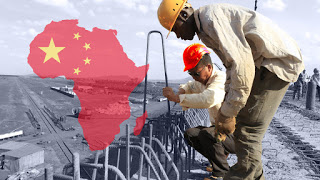August reports put China investment
record recording lows, reinforcing views that domestic demand remains
soft and leaving the economy more vulnerable to U.S. trade pressure.
record recording lows, reinforcing views that domestic demand remains
soft and leaving the economy more vulnerable to U.S. trade pressure.
According to Reuters, economists polled also forecast that industrial growth has flat lined for the third month in a row.
While August headline growth readings are
expected to be unchanged from July, that data was generally weak and
analysts agree consumption in China is clearly trending lower even as
export risks rise.
expected to be unchanged from July, that data was generally weak and
analysts agree consumption in China is clearly trending lower even as
export risks rise.
Automobile sales fell for the second
straight month in August as the slowing economy and trade frictions with
Washington make consumers more cautious about spending, an industry
group said.
straight month in August as the slowing economy and trade frictions with
Washington make consumers more cautious about spending, an industry
group said.
“While Beijing is accelerating approvals
for big-ticket infrastructure projects, analysts warn it will take some
time for the benefits to kick in, with economic conditions expected to
get worse before they get better.’’
for big-ticket infrastructure projects, analysts warn it will take some
time for the benefits to kick in, with economic conditions expected to
get worse before they get better.’’
Fixed-asset investment is expected to
have grown 5.5 per cent in January-August from the same period a year
earlier, unchanged from July’s record low, the poll showed.
have grown 5.5 per cent in January-August from the same period a year
earlier, unchanged from July’s record low, the poll showed.
Retail sales likely rose 8.8 per cent in
August on-year, also unchanged from July and among the softest
expansions in over 15 years.
August on-year, also unchanged from July and among the softest
expansions in over 15 years.
China’s industrial sector is also being hemmed in.
Industrial output likely expanded 6.0
percent in August from a year earlier, unchanged from readings in July
and June, according to a Reuters poll of 47 economists.
percent in August from a year earlier, unchanged from readings in July
and June, according to a Reuters poll of 47 economists.
But business surveys show factory orders
are cooling as Beijing’s tough pollution curbs continue to take a toll
on production and the U.S.-China trade war escalates. Manufacturing
activity in the key export province of Guangdong
shrank for the first time since March 2016.
are cooling as Beijing’s tough pollution curbs continue to take a toll
on production and the U.S.-China trade war escalates. Manufacturing
activity in the key export province of Guangdong
shrank for the first time since March 2016.
Data last week showed China’s export and import growth cooled in August.
The world’s second-largest economy had
already been starting to cool before the trade dispute with the U.S.
flared, with a multi-year crackdown on financial risks and debt pushing
up borrowing costs and making it harder for some
companies to secure funding.
already been starting to cool before the trade dispute with the U.S.
flared, with a multi-year crackdown on financial risks and debt pushing
up borrowing costs and making it harder for some
companies to secure funding.
The United States and China have
activated tariffs on $50 billion of each other’s goods since July and
U.S. President Donald Trump has threatened that he is ready to slap
tariffs on virtually all Chinese imports into the United
States. Another round is expected to be announced at any time.
activated tariffs on $50 billion of each other’s goods since July and
U.S. President Donald Trump has threatened that he is ready to slap
tariffs on virtually all Chinese imports into the United
States. Another round is expected to be announced at any time.
In addition to ramping up spending, China
has rolled out a series of measures to ease strains on its companies,
cutting taxes and offering assistance for firms hit by the trade battle.
has rolled out a series of measures to ease strains on its companies,
cutting taxes and offering assistance for firms hit by the trade battle.
Last week it said it will increase export tax rebates for 397 items ranging from some steel products to electronic ones.
Authorities have also pumped more funds into the financial system to bring down financing costs lower.
China’s economy is facing increasing
risks in the second half of the year and policymakers need to step up
efforts to hit key development goals, the head of the state planning
agency warned.
risks in the second half of the year and policymakers need to step up
efforts to hit key development goals, the head of the state planning
agency warned.





